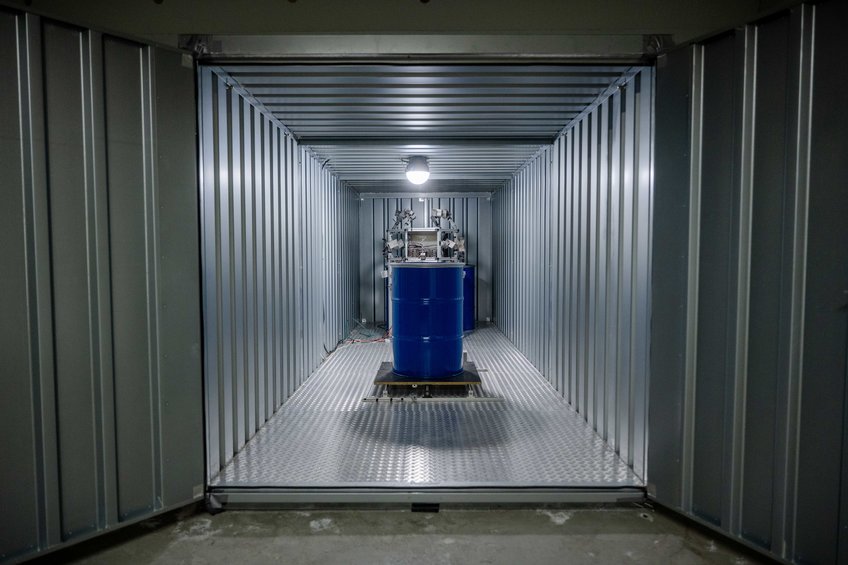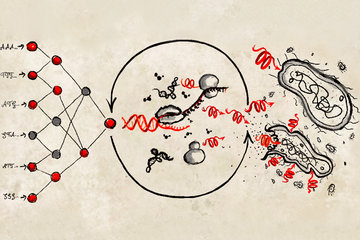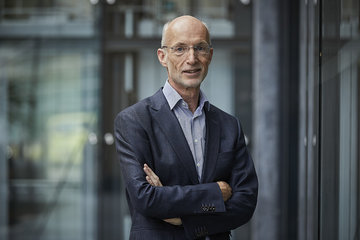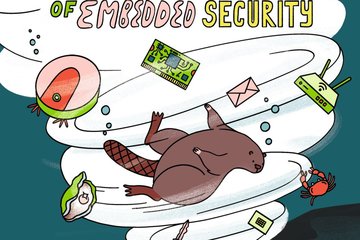Trust is good, control is safer
A sophisticated device uses radio waves to determine whether states are really complying with nuclear weapons treaties
When it comes to nuclear weapons, no state really wants to leave anything to chance. A small movement in nuclear weapons stocks can have a major impact. It is therefore important to monitor nuclear weapons treaties effectively and closely. This is a real challenge in high-security facilities and it makes the proposed solution all the more creative.

An article that has now appeared in the scientific journal "Nature Communications" describes how State A can ensure that there are no changes in State B's nuclear weapons stockpile – and how this is possible without permanent on-site monitoring. The primary goal is not necessarily to monitor the active warheads, i.e. those ready for use, but rather to ensure that the far greater proportion of inactive warheads remain inactive. The system design was developed by a mixed team consisting of scientists from the Max Planck Institute for Security and Privacy in Bochum, Ruhr University Bochum, the School of Public and International Affairs at Princeton University, the University of Connecticut, Harvard University, PHYSEC GmbH, and Technische Universität Berlin.
“Our system uses two antennas to record a radio fingerprint of the room,” explains Dr. Johannes Tobisch. One of the antennas emits a radio signal that is reflected off the walls and objects in the room. The other antenna records the reflected signal. The recorded signal is characteristic: if the objects were moved only minimally, this would noticeably change the radio fingerprint. Major changes, such as the removal of a stored nuclear warhead, can thus be reliably detected.
Mirrors to guarantee security
However, this method can only work if state B measures the radio fingerprint at precisely the time when state A requests it. It’s therefore necessary to prevent State B from recording the radio fingerprint and sending the recording instead of a just-measured signal. “That would be like someone sticking a photo in front of a surveillance camera,” illustrates Johannes Tobisch.

For this reason, a setup with 20 rotating metallic mirrors is initially installed in the room that is to be monitored. These special mirrors are able to reflect the radio waves in the same way that an optical mirror ideally reflects light at visible wavelengths. If the position of the mirrors changes, the radio fingerprint also changes. State A would record the radio fingerprints for different mirror positions during a one-time on-site visit and store them in a secret database. State A could now remotely request State B to carry out a measurement for a specific mirror position using radio waves every hour, for example, and transmit the recording. If this signature does not match the signature recorded for this particular mirror configuration, there must have been a change in the room.
This method requires both states to be willing to install such a system in the first place. And yet this procedure offers two decisive advantages for both states: the transparency of the procedure can act as an incentive to install the equipment in a sensitive area such as a nuclear weapons storage facility and active on-site monitoring would no longer be necessary. “Seventy percent of the world nuclear weapons are kept in storage for military reserve or awaiting dismantlement,“ outlines Dr. Sébastien Philippe. “The presence and number of such weapons at any given site cannot be verified easily via satellite imagery or other means that are unable to see into the storage vaults.” Because of the difficulties to monitor them, these 9,000 nuclear weapons are not accounted for under existing nuclear arms control agreements. “This new verification technology addresses this long-standing challenge and contributes to future diplomatic efforts that would seek to limit all nuclear weapon types”, says Philippe.
Setup in a field test
To test the idea, the researchers set up a container with movable barrels on the campus of Ruhr University Bochum, Germany, which they monitored using radio wave technology. Using this setup, they showed that radio fingerprints could be reliably reproduced for individual mirror settings. Different mirror settings also produced a variety of easily distinguishable radio fingerprints. If the researchers moved one of the barrels in the container, a few millimeters of displacement were enough to show up in the radio fingerprint.

To make this control procedure secure, it must be ensured that the number of possible mirror configurations is high enough. Otherwise, state B could measure all possible configurations and their radio signatures in the time between requests from state A and then transmit the appropriate, specially recorded radio fingerprint when a request is made. However, there are so many possibilities that this scenario is highly unlikely. With 20 mirrors, each of which has eight possible positions, this results in 8^20 possible configurations, a number with 18 zeros.
The team also analyzed whether it’s possible to decipher how mirror positions and radio fingerprints correspond to each other using machine learning. Algorithms can indeed predict radio fingerprints if they recognize a number of mirror positions and the corresponding radio signals. Finding the connection, however, takes longer the more mirrors there are in the setup. “With 20 mirrors, it would take eight weeks for an attacker to decode the underlying mathematical function,” points out Johannes Tobisch, adding: “Because of the scalability of the system, it’s possible to increase the security factor even more.”
“The technology combines cyber-physical security assessments, previously only possible on data and security chips, with cross-system physics in a completely new way. This enables new levels of trust, especially for the Internet of Things,” says Professor Christian Zenger. “At a time of heightened geopolitical tensions and with a new nuclear arms race brewing, this work is particularly timely and relevant,” concludes Sébastien Philippe.
RUB/Julia Weiler, MPG/Tobias Beuchert














